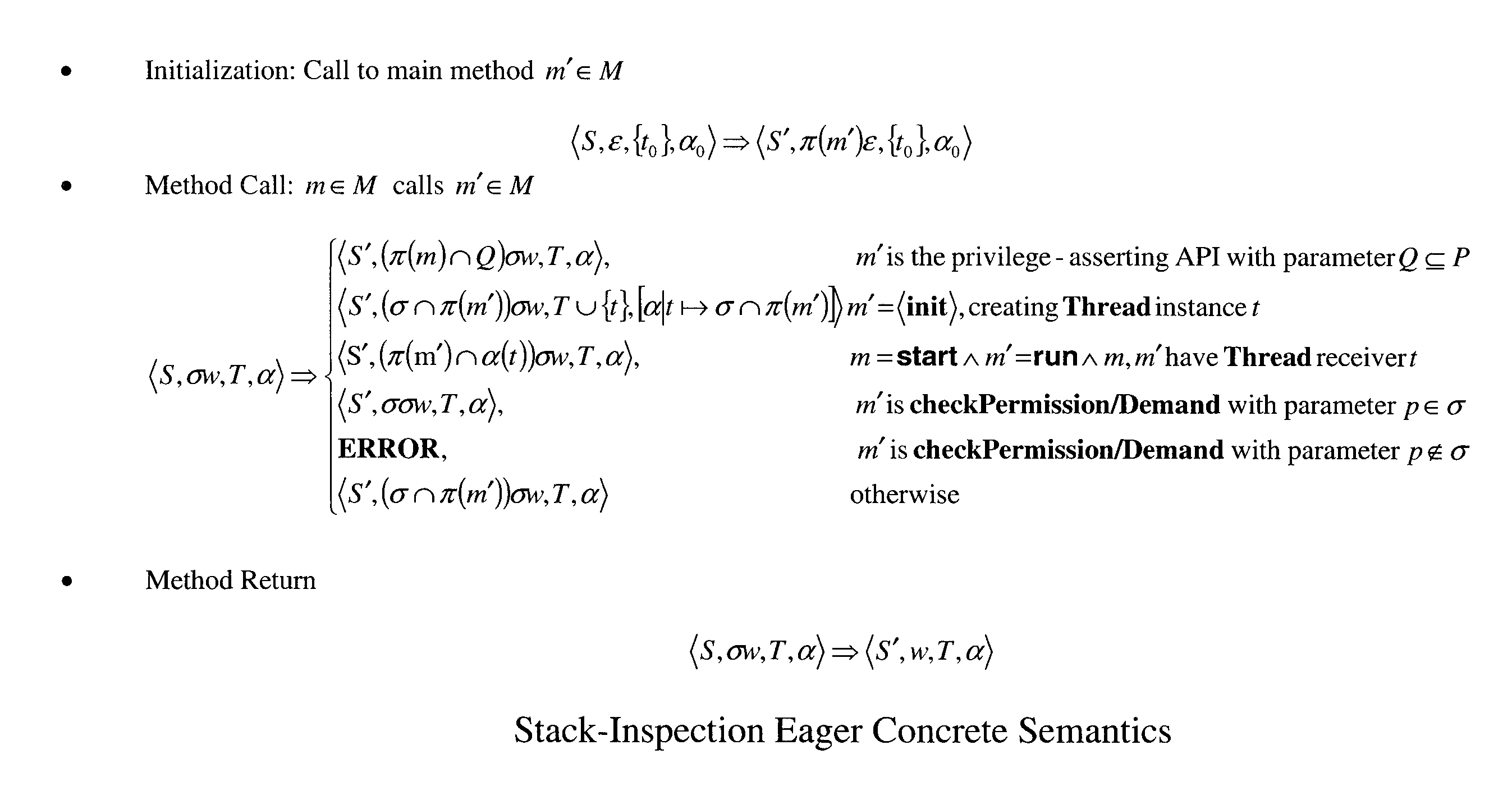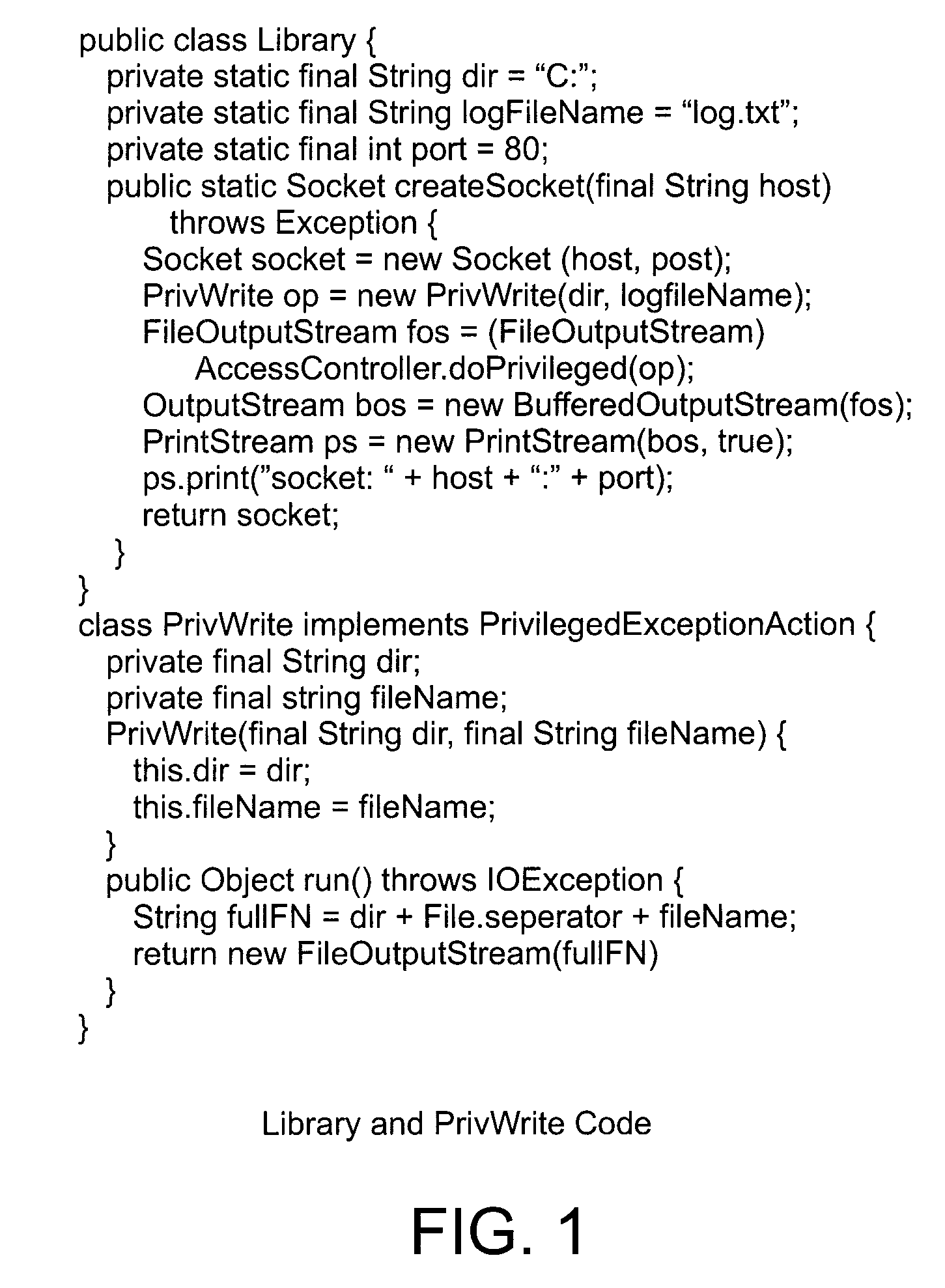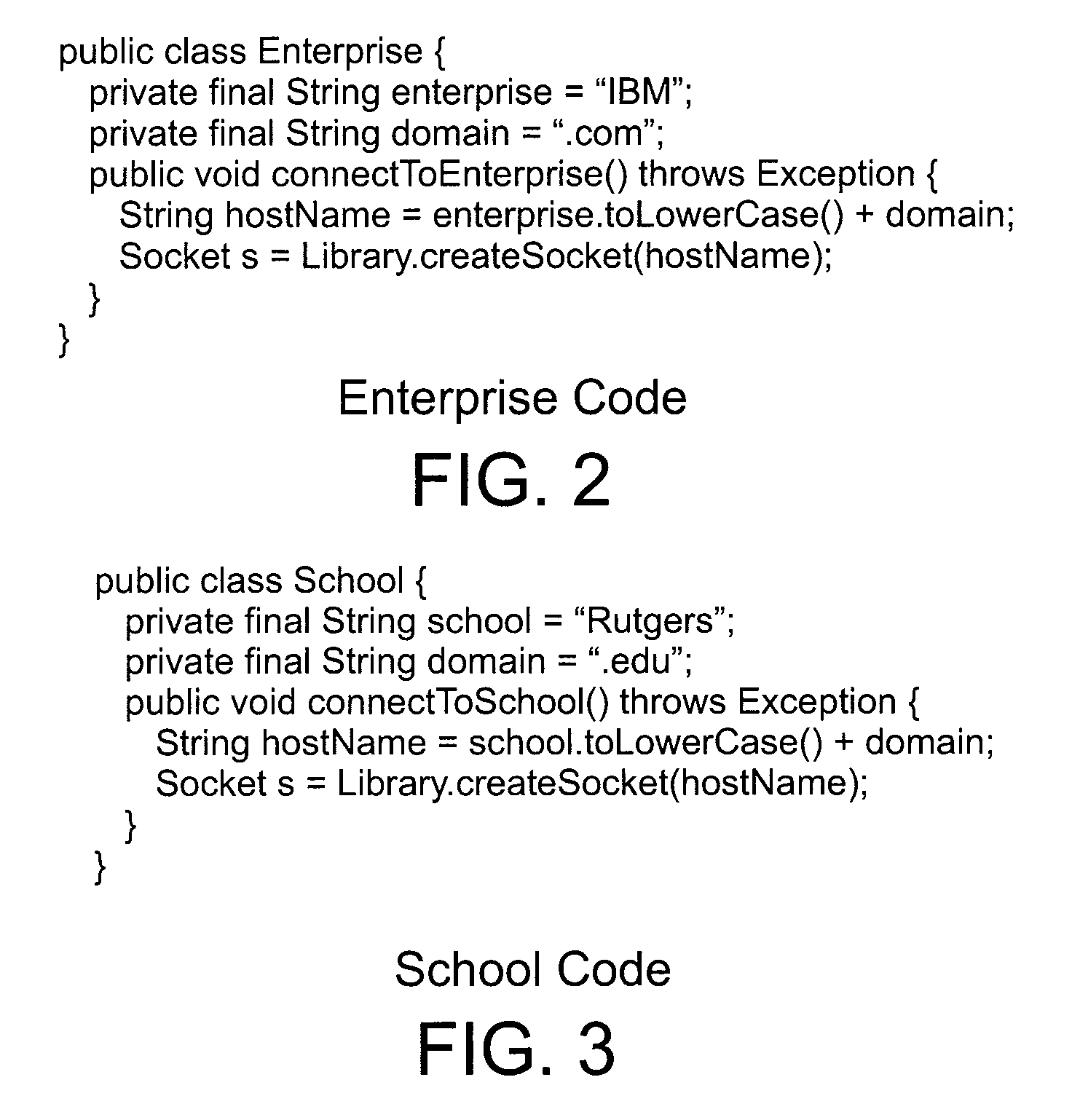System, method, and apparatus for modular, string-sensitive, access rights analysis with demand-driven precision
a technology of access rights and modularity, applied in the field of access control systems, can solve problems such as false positives, potential violations of the principle of least privilege, and violations of the principle of least privilege, and achieve the effect of reducing the number of false positives
- Summary
- Abstract
- Description
- Claims
- Application Information
AI Technical Summary
Benefits of technology
Problems solved by technology
Method used
Image
Examples
example
[0084]S2D2A2 was used on the following applications: JPDStore, JPTApi, Java Integrity, Javacup and Ganymede. The results reported in Table 2 are from running S2D2A2 on a Lenovo T61P ThinkPad with an Intel T7700 Core Duo 2.40 GHz processor, 3 GB of Random Access Memory (RAM), and Microsoft Windows XP SP2 operating system. S2D2A2 was run on an IBM Java Standard Edition (SE) VI.4.2—05 Runtime Environment, and comparing the results with the permission analysis of SWORD4J. For each application, Table 2 shows the application size, which does not include the libraries, the size of the generated callgraph, the time taken to perform the analysis and the number of permissions detected.
[0085]Among these permissions, those that are instantiated starting from the library entrypoints are highlighted, based on the specific parameters passed by the client code. Among the instantiated permissions, those that depend on string constants are not counted, which both S2D2A2 and SWORD4J can detect. Rather...
PUM
 Login to View More
Login to View More Abstract
Description
Claims
Application Information
 Login to View More
Login to View More - R&D
- Intellectual Property
- Life Sciences
- Materials
- Tech Scout
- Unparalleled Data Quality
- Higher Quality Content
- 60% Fewer Hallucinations
Browse by: Latest US Patents, China's latest patents, Technical Efficacy Thesaurus, Application Domain, Technology Topic, Popular Technical Reports.
© 2025 PatSnap. All rights reserved.Legal|Privacy policy|Modern Slavery Act Transparency Statement|Sitemap|About US| Contact US: help@patsnap.com



